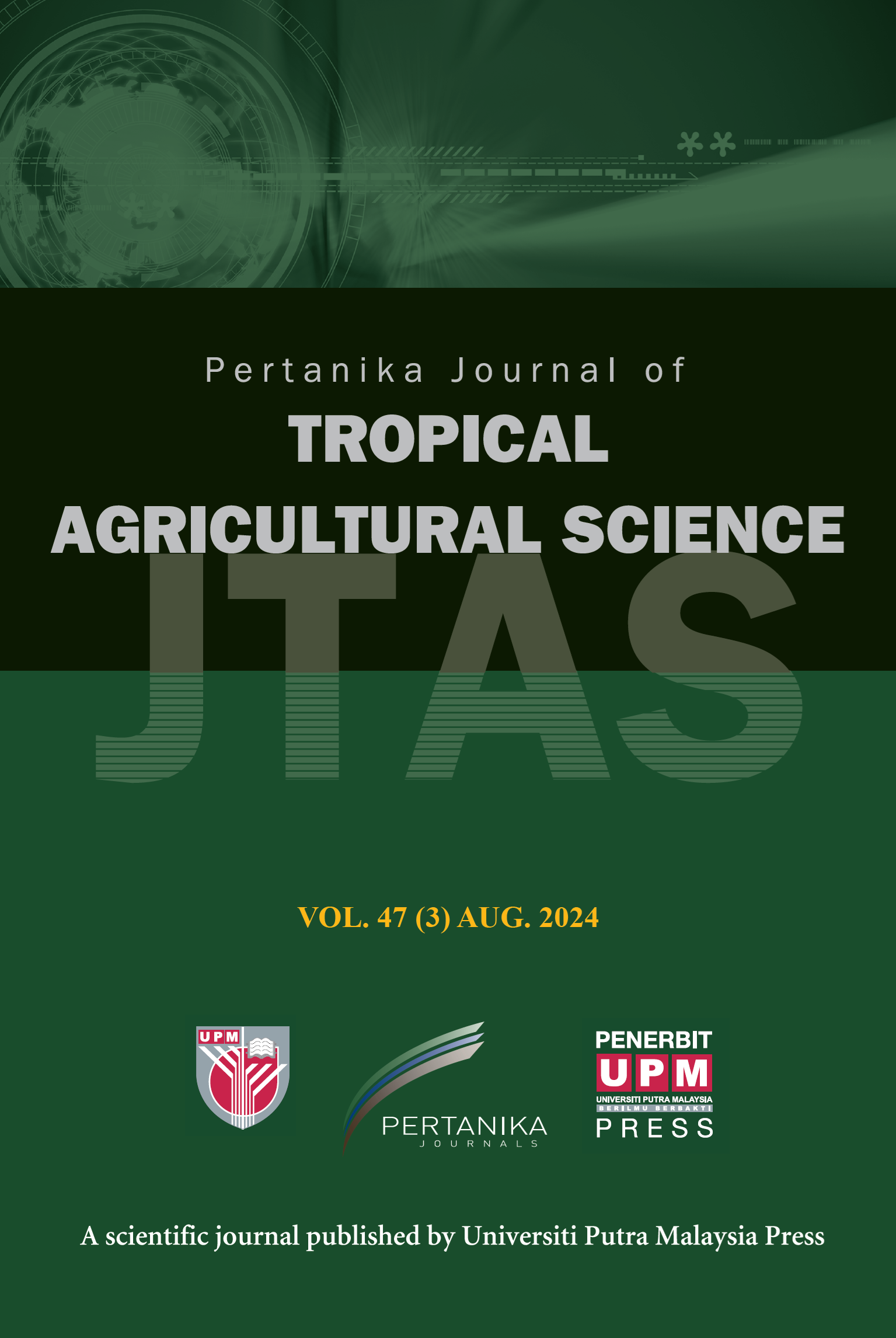PERTANIKA JOURNAL OF TROPICAL AGRICULTURAL SCIENCE
e-ISSN 2231-8542
ISSN 1511-3701
Development of In-Pipe Water Pollution Detection System Focusing on pH Contaminant
Nuraini Abdul Aziz, Muhammad Aiman Chemani@Jumani, Muhammad Safwan Anuari, Muhammad Aiman Hakimi Shamsuddin and Azmah Hanim Mohamed Ariff
Pertanika Journal of Tropical Agricultural Science, Volume 30, Issue 2, April 2022
DOI: https://doi.org/10.47836/pjst.30.2.10
Keywords: pH contaminants, sensor, simulation, valve, wastewater, water pollution
Published on: 1 April 2022
Developing an in-pipe water pollution detection system ensures that the contaminated water will not enter the system in the event of water pollution, hence reducing the possibility of a water crisis. In this research, the design of the system was completed using SOLIDWORKS. ANSYS software was used for the deformation simulation analysis of the pH sensor and the ball valve installed in the system due to water pressure. The maximum deformation of the ball valve occurred at the edges of the ball valve for a fully-closed valve and the middle tip of the ball valve when the valve was opened 45°. The deformation is similar in these conditions due to the small area at the edges; thus, the pressure at the location is higher. For the pH sensor, the deformation of the body is approximately 5.7138 × 10-4 mm. The maximum stress is below the limit, proving that the sensor is suitable for operating in that position. Overall, the experimental results proved that the system is able to detect if the water is polluted by sensing the pH level changes in the water and managing the flow of the water pipe. In the future, by complementing this system with the Internet of Things (IoT), it can assist and alert workers in water treatment plants to detect water pollution in their treatment facility at the earliest stage. Thus, reducing operational costs and the closure of water treatment plants can be prevented in the future.
-
Abdulwahid, A. H. (2020). IoT based water quality monitoring system for rural areas. In 9th International Conference on Renewable Energy Research and Application (ICRERA 2020) (pp. 279-282). IEEE Publishing. https://doi.org/10.1109/ICRERA49962.2020.9242798
-
Budiman, F., Rivai, M., & Nugroho, M. A. (2019). Monitoring and control system for ammonia and pH levels for fish cultivation implemented on Raspberry Pi 3B. In International Seminar on Intelligent Technology and Its Applications (ISITIA 2019) (pp. 68-73). IEEE Publishing. https://doi.org/10.1109/ISITIA.2019.8937217
-
Dalun, H., & Abdullah, M. O. (2021). The primary pollutants of the river are domestic sewage, livestock waste, farms, runoffs from towns, silt from earthworks, leachate from garbage dumps, runoff from farms, litter from riverside squatters and mining waste. Journal of Cleaner Production, 303, 1-13. https://doi.org/10.1016/j.jclepro.2021.127091
-
Madhavireddy, V., & Koteswarrao, B. (2018). Smart water quality monitoring system using IoT technology. International Journal of Engineering & Technology, 7(4.36), 636-639. https://doi.org/10.14419/ijet.v7i4.36.24214
-
Meghana, M., Kumar, K., Verma, R., & Kiran, D. (2019). Design and development of real-time water quality monitoring system. In 2019 Global Conference for Advancement in Technology (GCAT 2019) (pp. 527-533). IEEE Publishing. https://doi.org/10.1109/GCAT47503.2019.8978414.
-
Priya, S. K., Shenbagalakshmi, G., & Revathi, T. (2019). Architecture of smart sensors for real time drinking water quality and contamination detection in water distributed mains. Romanian Journal of Information Science and Technology, 22(3-4), 202-214.
-
Supriadi, O., Sunardi, A., Baskara, H. A., & Safei, A. (2019). Controlling pH and temperature aquaponics use proportional control with Arduino and Raspberry. IOP Conference Series: Materials Sciience and Engineering, 550(1), 1-9. https://doi.org/10.1088/1757-899X/550/1/012016
-
Varsha, L., Anjitha, H., Akshay, M., Aruna, P., Jagadeesh, B., & Audre, A. A. (2021). IoT based smart water quality monitoring system. Global Transitions Proceedings, 2, 181-186. https://doi.org/10.1016/j.gltp.2021.08.062
-
Yuan, F., Huang, Y., Chen, X., & Cheng, E. (2018). A biological sensor system using computer vision for water quality monitoring. IEEE Access, 6, 61535-61546. https://doi.org/10.1109/ACCESS.2018.2876336
ISSN 1511-3701
e-ISSN 2231-8542




